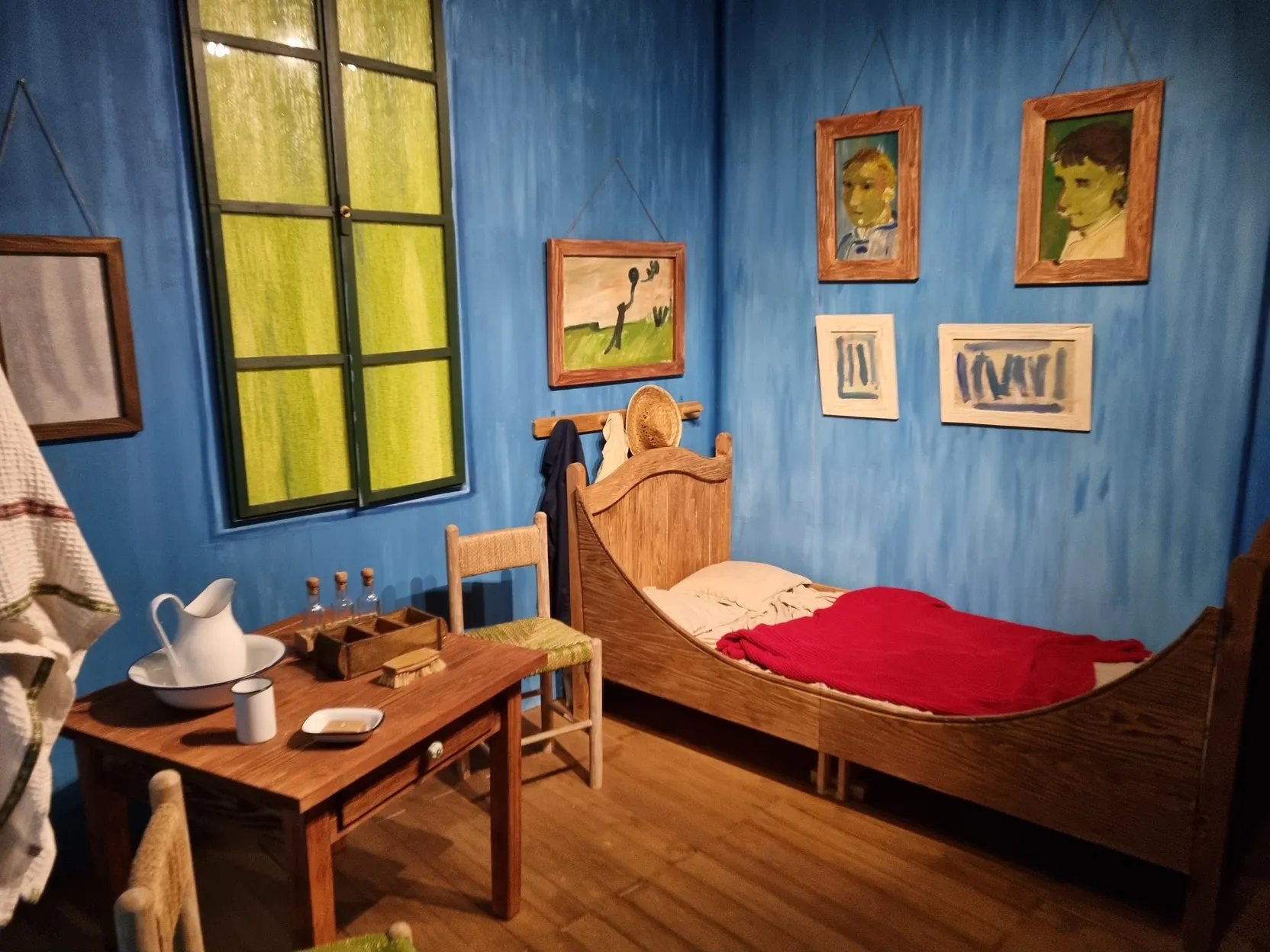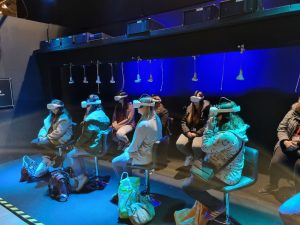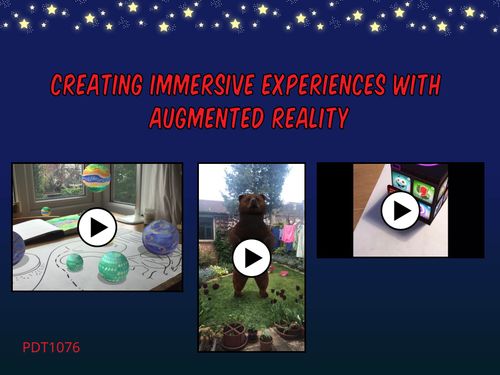This week the FDLT Year 1 students visited the Van Gogh Immersive Experience in Leicester. It is set in All Saints Church in the centre of Leicester and is based around using Augmented Reality (AR) and Virtual Reality (VR) digital technology to experience the world and art of Vincent Van Gogh in a new way.
 It begins with some background information about Van Gogh’s life using a time line, a short video and a recreation in real life of the bedroom from one of his paintings: “Bedroom at Arles”, painted in 1889.
It begins with some background information about Van Gogh’s life using a time line, a short video and a recreation in real life of the bedroom from one of his paintings: “Bedroom at Arles”, painted in 1889.
This allows children to really step inside the painting so introducing them to it before the visit would be a good idea. Here’s some information about the painting from the Van Gogh Museum in Amsterdam.
It makes me think of how we might plan and resource imaginative play in the Early Years and beyond with the world of a painting as the focus, where we often would use stories or areas of the curriculum as the focus for the learning environment.
 The next section of the experience is the immersive part that uses AR technology to bring the life and world of Van Gogh to life. Projections are made onto the walls and floor accompanied by the words of Van Gogh from his letters and diaries and some music. We were able to sit on the carpet, benches or deck chairs and immerse ourselves in the experience. Some of it was creating a sensory experience around the paintings, with water pouring from the river paintings and some brought the paintings to life by connecting them, such as when all the landscapes were displayed and a train ran through them all the way around the room.
The next section of the experience is the immersive part that uses AR technology to bring the life and world of Van Gogh to life. Projections are made onto the walls and floor accompanied by the words of Van Gogh from his letters and diaries and some music. We were able to sit on the carpet, benches or deck chairs and immerse ourselves in the experience. Some of it was creating a sensory experience around the paintings, with water pouring from the river paintings and some brought the paintings to life by connecting them, such as when all the landscapes were displayed and a train ran through them all the way around the room.
The next section contains some activities for children – drawing on blank walls with crayons and drawing and uploading their sketches into a display using a QR code.
The final section was for the students to put on VR headsets and fully be taken into another world! This started in Van Gogh’s bedroom and then took us outside to explore the landscape that inspired some of his paintings. This really allowed us to see his inspiration and what he created in response to it.
Taken altogether the students experienced the life and art of an artist in a number of different ways: it would be interesting to see how this could be used to support and inspire learning for pupils of a range of ages, as well as some of the challenges that they might need to overcome.
Dede et al. (2017, p.4) define this kind of digital experience as “Immersion in a mediated, simulated experience (VR, MUVE, or AR) involves the willing suspension of disbelief.” This is an approach that we often use with pupils in the classroom in stories and drama and so exploring how digital techniques might develop this further is an interesting idea. You can explore some other classroom approaches to AR using mobile devices in this digital book.
Reference:
Dede C.J., Jacobson J. and Richards J. (2017) Introduction: Virtual, Augmented, and Mixed Realities in Education. In: Liu D., Dede C., Huang R. and Richards J. (eds) Virtual, Augmented, and Mixed Realities in Education. Singapore: Springer. pp.1-19.


